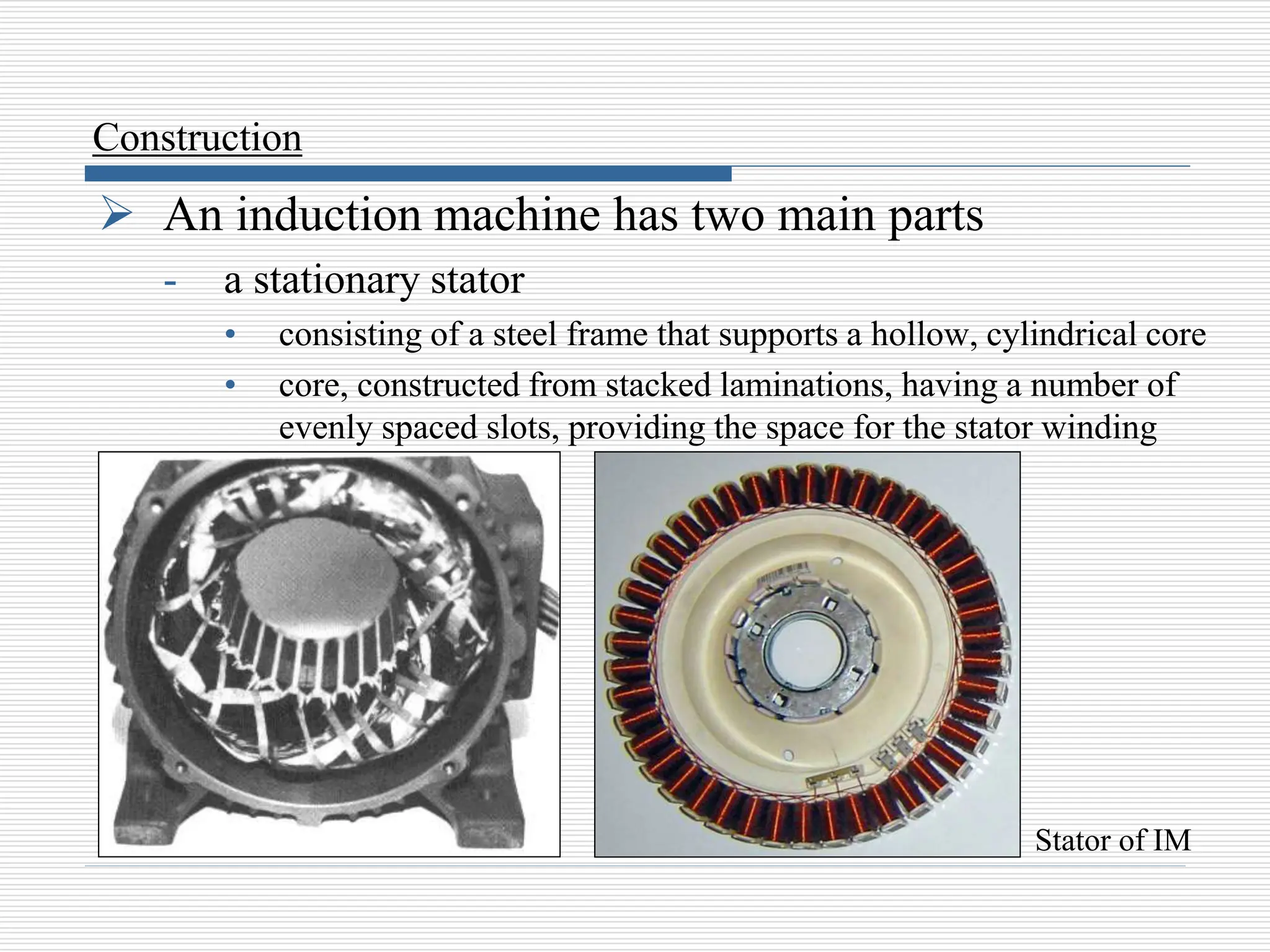Induction machines are commonly used as motors in industry due to their robust construction and low maintenance. They can also be used as generators by running the rotor slightly faster than synchronous speed. The document discusses the construction of induction machines, including their stator, squirrel cage rotor, and wound rotor variations. It also covers the operating principles of induction machines, including how torque is produced from the interaction between the rotating magnetic field and induced currents in the rotor. Modeling methods like the d-q axis model and equivalent circuit are presented. Simulation results demonstrating the torque-speed characteristics and effects of saturation are also summarized.















































